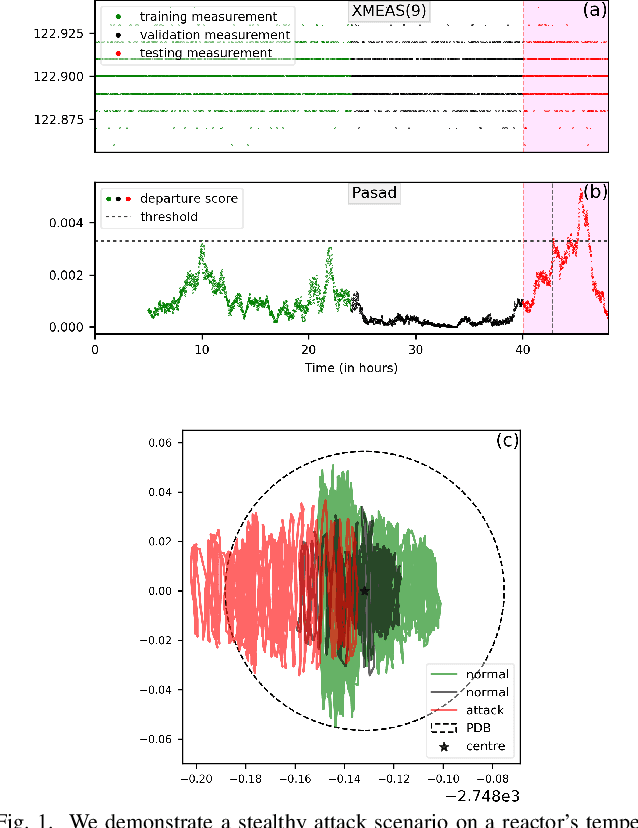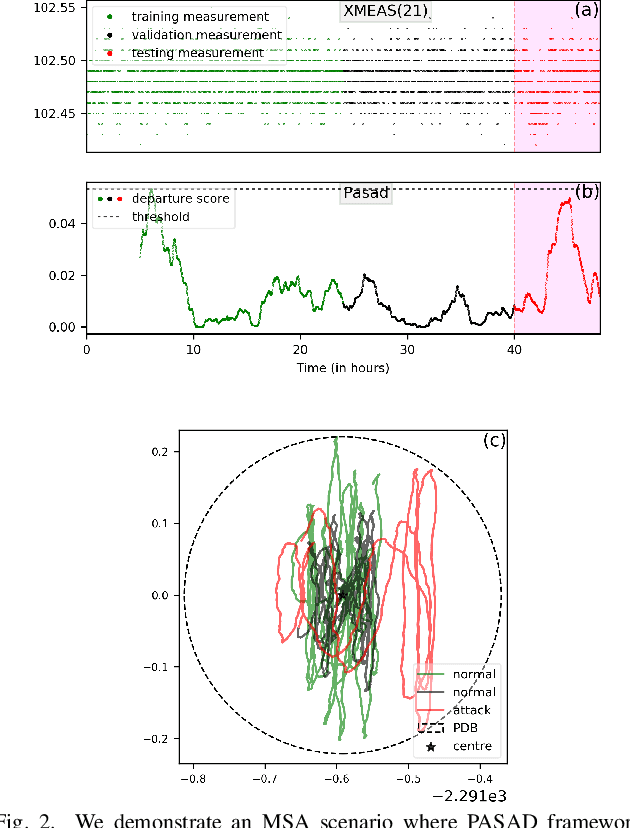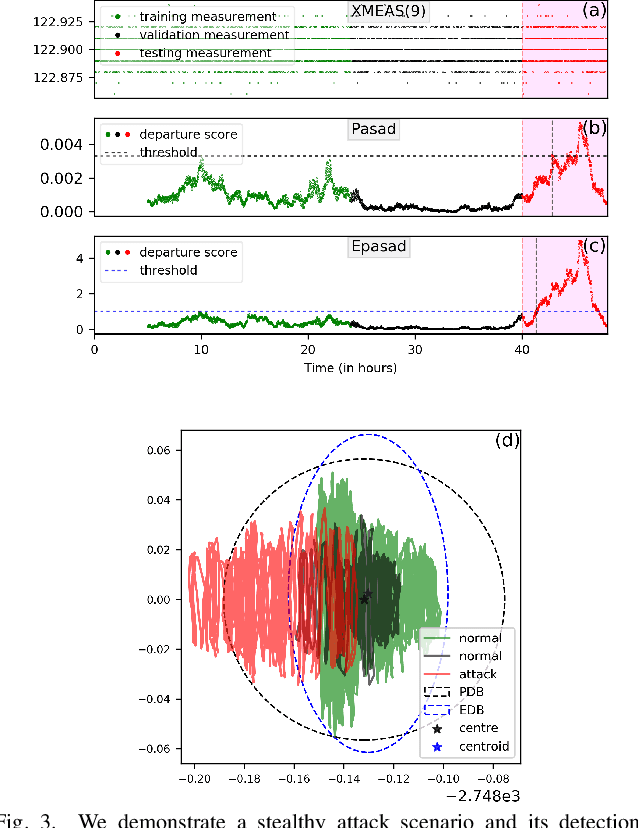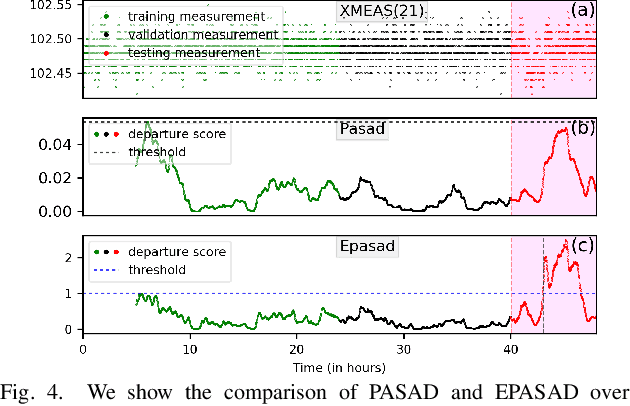Vikas Maurya
EPASAD: Ellipsoid decision boundary based Process-Aware Stealthy Attack Detector
Apr 08, 2022



Abstract:Due to the importance of Critical Infrastructure (CI) in a nation's economy, they have been lucrative targets for cyber attackers. These critical infrastructures are usually Cyber-Physical Systems (CPS) such as power grids, water, and sewage treatment facilities, oil and gas pipelines, etc. In recent times, these systems have suffered from cyber attacks numerous times. Researchers have been developing cyber security solutions for CIs to avoid lasting damages. According to standard frameworks, cyber security based on identification, protection, detection, response, and recovery are at the core of these research. Detection of an ongoing attack that escapes standard protection such as firewall, anti-virus, and host/network intrusion detection has gained importance as such attacks eventually affect the physical dynamics of the system. Therefore, anomaly detection in physical dynamics proves an effective means to implement defense-in-depth. PASAD is one example of anomaly detection in the sensor/actuator data, representing such systems' physical dynamics. We present EPASAD, which improves the detection technique used in PASAD to detect these micro-stealthy attacks, as our experiments show that PASAD's spherical boundary-based detection fails to detect. Our method EPASAD overcomes this by using Ellipsoid boundaries, thereby tightening the boundaries in various dimensions, whereas a spherical boundary treats all dimensions equally. We validate EPASAD using the dataset produced by the TE-process simulator and the C-town datasets. The results show that EPASAD improves PASAD's average recall by 5.8% and 9.5% for the two datasets, respectively.
Sequence to sequence deep learning models for solar irradiation forecasting
Apr 30, 2019



Abstract:The energy output a photo voltaic(PV) panel is a function of solar irradiation and weather parameters like temperature and wind speed etc. A general measure for solar irradiation called Global Horizontal Irradiance (GHI), customarily reported in Watt/meter$^2$, is a generic indicator for this intermittent energy resource. An accurate prediction of GHI is necessary for reliable grid integration of the renewable as well as for power market trading. While some machine learning techniques are well introduced along with the traditional time-series forecasting techniques, deep-learning techniques remains less explored for the task at hand. In this paper we give deep learning models suitable for sequence to sequence prediction of GHI. The deep learning models are reported for short-term forecasting $\{1-24\}$ hour along with the state-of-the art techniques like Gradient Boosted Regression Trees(GBRT) and Feed Forward Neural Networks(FFNN). We have checked that spatio-temporal features like wind direction, wind speed and GHI of neighboring location improves the prediction accuracy of the deep learning models significantly. Among the various sequence-to-sequence encoder-decoder models LSTM performed superior, handling short-comings of the state-of-the-art techniques.
 Add to Chrome
Add to Chrome Add to Firefox
Add to Firefox Add to Edge
Add to Edge